-
more about classical conversations
We are beginning our fifth year in Classical Conversations (CC) this year. As a homeschooler who resists being pinned to any form or shape, it astonishes me that we’ve stayed with it for so long. This will also be my third year “tutoring,” the word CC uses to describe the parent-volunteer who teaches the three-hour-morning class session to an assortment of ages (there are typically three to five classes in a community, grouped by age from 4-12). I wouldn’t say I’m particularly gifted at this, it’s just a job that needed someone, and I like to help when I can.

visiting the annual sunflower garden at Billings Farm The timing is appropriate to reflect on our years with CC because my family was just at the doctor’s office, having that annual (or biannual, as covid made it) well-visit. A visit where questions like, “What’s your favorite subject in school?” come up as a formal question they’re expected to answer on their own. Our two oldest answered separately (I managed to give them their own appointments this year), “History! I love history.” And, “What’s a subject you sometimes need help with?’ Again, both answered the same: “Geography.” Those answers are a testimony. CC inculcated the love of history. It introduced the language, the characters, the way it arcs in spots, and blurs in others. The way it invites to be understood, and whispers the stories buried within. And CC introduced the challenge of geography. The immense amount to be learned. How great it felt when you knew the names of most of the places on the map. How often you don’t know all the names. How it’s changed throughout history.
A kind reader emailed me to ask about what she might expect her five-year-old daughter’s first time CC experience to look like. Thinking of a response brought me way back to when we first enrolled, on a lark really. I thought—a four-year-old, what do I have to lose? If she hates it, we won’t go. If she loves it, it will be far more content than I ever expected to introduce this year. I think I experienced whiplash at the first meeting. The tutor was saying facts over and over again, and only asking the kids to repeat after her? No explanations? No graphics to introduce these characters characters? She’d scrawled these facts on a whiteboard? Then she would just move on to a completely new topic, and have them repeat that too?
But the thing that got us first, a few weeks into it, was their word recognition from the timeline song and the history sentences. In church our kids leaned over and hissed, “Caesar Augustus?! That’s on the timeline song.” A few weeks later, “Jerome completes the Vulgate?! That’s on the timeline song.” We realized that recognizing language out in the world felt incredible to them. Words have meaning, even if they didn’t fully understand what that meaning was yet.
The crème de la crème of this out in the world experience came at the end of the year. Our oldest had been following along with the memory work, even though she was enrolled in public school at the time. She couldn’t resist it; from the moment she heard the first sung history sentence, she was smitten. Anyway, the year is finishing up, and the CC kids have memorized the Preamble to the Constitution. It’s one of the last history sentences for the Third Cycle, the USA history cycle. So she goes with her public school on a field trip to the city courthouse. Waiting in line inside, she starts scanning the walls. All of a sudden she realizes she recognizes the words carved into the wall. “We the people, of the United States in order to form a more perfect union…” There was the preamble, carved in marble, larger than her. How cool is that? Second grade, spotting significant and meaningful language in its context, murmuring the lines to herself, before she even fully understood them.
Fast forward three years. She’s starting her third year enrolled in CC. We also enroll her in an online Latin class—again, on a lark, let’s just try it!. First homework: memorize the first declensions noun endings. Well, that’s easy, because she memorized all—first, second, third, fourth, and fifth declension—noun endings when she was seven, back in CC’s Cycle One. First year Latin homework just became significantly easier!
It’s a myriad of experiences like that that keep me coming back to the classical education peg-and-hooks theory. The idea that we put these pegs up for them, and maybe they have nothing to hang on the pegs, for awhile. Then they hear an adult they admire mention Martin Luther King Jr. They sort through their memory of memorized words and phrases, find the peg “Civil Rights Movement,” and hang that experience there. Later on, they see a picture of a Buddhist monk. They sort through their mind, find the peg “Founded in the sixth century B.C., Buddhism…” and hang that image there.
So my answer to the “What is this, what did I sign up for?” would be: give it time. Watch it unspool.
On a day-to-day basis, the CC curriculum is not the main thing I do with my children. I prioritize reading aloud together, practicing handwriting and spelling, learning to read (for the younger ones), and grammar and Latin for the older ones. I prioritize play and lots of free time. I play the CC cds in the car. If we’re on long car trips, I ask them to review weeks of CC on the app. If they tell me they wished they knew more of the material by heart, I help them practice it. But it’s supplemental, not primary, in my mind.
But there’s more! There’s the community. Our community has grown to have a number of children the same age as my children. They look forward to connecting with them every week. They love the presentation portion of their class when they can learn from one another, raise their hands and ask questions of one another. They pay attention to which books their friends are reading, and which projects they shared.
If you were just looking at politics, there would be a vast chasm of difference between the moms’ feelings. I know for a fact I would disagree vehemently politically with moms there that I admire enormously. But we don’t need to talk about that. Instead we talk about what we’re doing at home. How we’re learning together. What we’re reading. What we’re loving. How we’re handling difficult moments and discouragement.
I find many of the moms are more curriculum driven than I am. They complete far more work with their children—more textbooks, more content. They anticipate homeschooling through high school (I don’t, this is an up-to-middle/high-school plan for me). But that’s fine with me. I like being around that, being encouraged by it, maybe even challenged by it.
Speaking of challenging, it is challenging. Getting out of the house on time. Packing snacks and lunches. Preparing to teach a class. Helping the girls plan presentations. Writing papers for Essentials (the afternoon program that starts at age nine). Getting my toddler to go into childcare. We’re exhausted at the end of the day. But when I evaluate how we’re feeling on the drive home, which I do every time, it feels like–yes, this was good. And we enjoy our slow Thursday mornings all the more.
Here’s something funny–I love researching things online. Love to arrive in a new town having already decided the first three things I’m going to do there. However, I do not research people’s opinions about Classical Conversations online. I don’t want to read blog articles about “Why I left Classical Conversations.” It just holds zero interest. I think, if it’s working for your children, if they’re excited and engaged, what more can you ask? Don’t load it with too much importance, you know? Don’t make it your whole ethos.
Resources/Guidance I’ve enjoyed for digging in…
Farmhouse Schoolhouse: the blog of an inspiring cc mom.
Memory Work Coloring Books: on Etsy.
Zag Homeschool: not cc specific, but this video course is the clearest, fastest thing I’ve encountered to feel like a comfortable, competent homeschooler. You can use the code RACHAEL50 for a 50% discount. (I previewed the whole course before endorsing it but am not being paid in any way to promote it.)
The Well Trained Mind: this book has been super accessible and inspiring for the overall vision of a classical education.
Heritage Mom: not a cc mom, but a Charlotte Mason homeschool mom (lots of crossover with Charlotte Mason & cc) that I admire.
Half a Hundred Acre Wood: what’s gathered here can be a little overwhelming but it’s still a fantastic resource. Check out her booklists.
Share your thoughts and comments!
-
This Summer: All About Book Clubs
I’m feeling very inspired by the idea of summer book clubs. Planning for summer things in advance, as our other commitments are winding down, is always pleasant for me, whereas coming up with anything particular in that moment summer has arrived–forget about it. There’s also the urging to mark the end of something and celebrate, and herald the beginning of something else–that takes planning too. So I’m thinking through which books we may like to read and invite friends to read with us. Last summer for Lux was all about the four-volume Green Ember series, a family-friendly fantasy series about warrior rabbits. It’s no Tolkien, but kids love it and it has positive messages about integrity, friendship, and honesty.
Listening to this podcast interview with Amber Johnston, I was so surprised to hear she read Roll of Thunder, Hear My Cry as a 4th grader. I read it in middle school, and didn’t really understand it. Or maybe I just had no understanding of where Jim Crow laws, lynching, and sharecropping placed in American history. Either way, the opportunity was missed. Amber discusses how influential it was for her, and how she is now reading it to her daughters in their elementary years, and I would like to do the same!
(Definitely listen to the whole interview with Amber, linked to above, it is excellent.)
Do we homeschool year round? Of a sort. Classical Conversations ends this week. Online Latin ends at the end of May. That’s just in time because with the change of seasons and the sudden pleasure of being outside, we’ve all grown terribly tired of memorizing…anything. But we seem to do best* when we have about three things we’re doing all the time–reading something aloud together, working on reading lessons for those who need it, keeping up with handwriting practice or copy work (as I type this, two of the girls have printed off the first page of wikipedia on *wolves* and have carefully copied out three handwritten pages from it. Their idea, but nonetheless it counts towards all sorts of things academically), and working on something specific, like science experiments, categorizing rocks, identifying plants in the woods, or meeting up with homeschool friends to discuss a book.
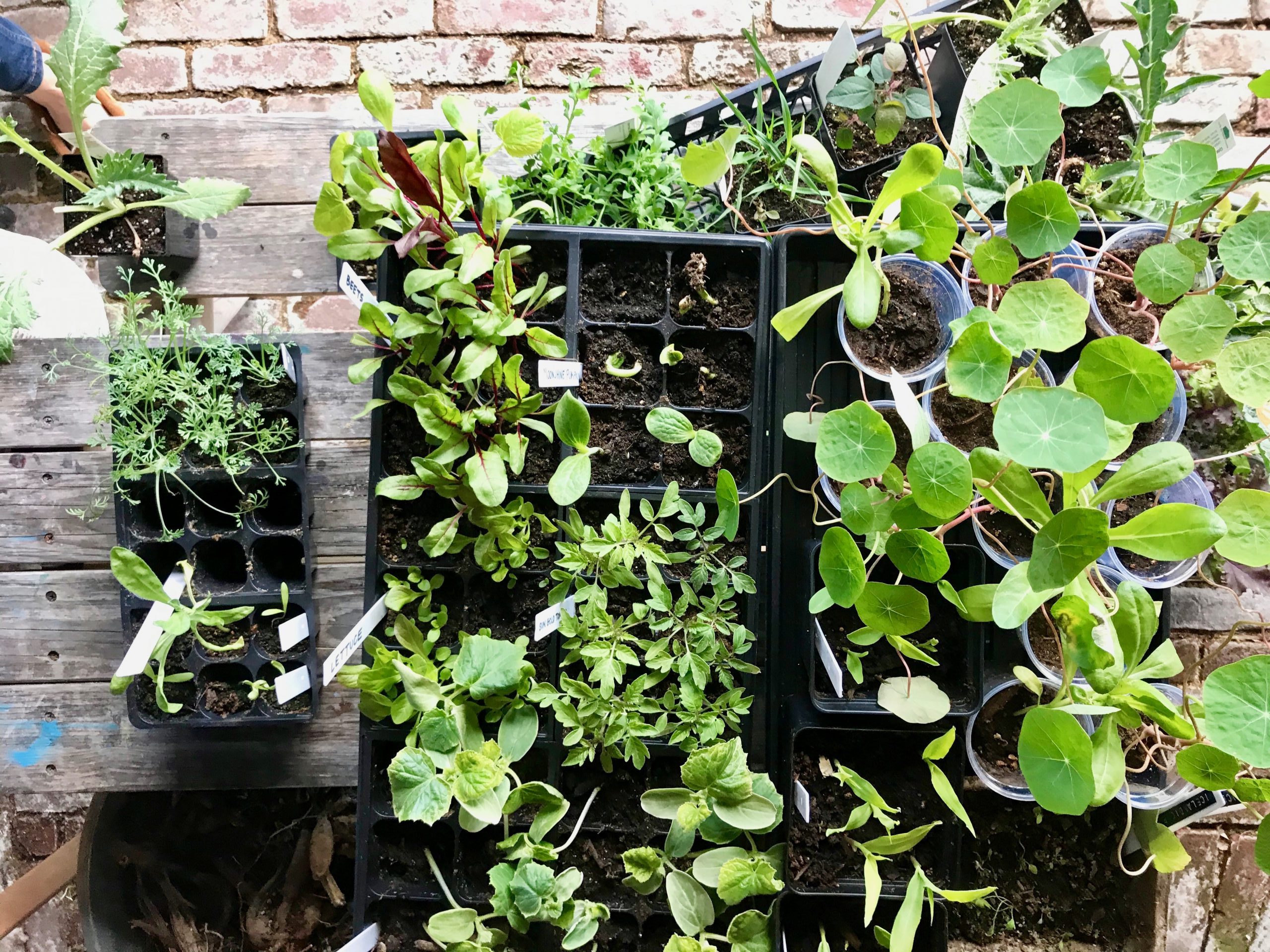
*By “best,” I mean that interacting with each other around some structure each day results in the most pleasant interactions and better expectations, on both sides, of what those interactions may be.
A friend of mine remarked to me that her boys enjoyed the the transition from summer to fall because she starts paying attention to them again, after a heady summer of managing her thriving vegetable and flower gardens. That kind of seasonally inspired neglect fascinates me, but it’s not really the case in my house. And I find with homeschool, it’s often the case that all you need to do is switch up the routine a bit and you’ll still enjoy “doing things” year round.
You can preorder what looks like an amazing title about Summer Book Clubs from Wild & Free. Reading through the list of books they’ve planned activities, themed gatherings and discussions around is inspiration enough. I am a wary follower of Wild & Free because they have a lot of magic childhood phrasing, all the time, which isn’t the best influence on me when I’m scrolling social media for affirmation and encouragement (isn’t that why we’re usually on that app?). Personally, I don’t feel the pysche of childhood is all that magical, but rather grounded in boredom with omnipresent pursuit of stability, and habit. But Ainsley does an incredible job of gathering influential mothers as writers and encouraging them content creators, and I really admire that.
Last thought on summer titles…and I’m thinking about suggesting The Martian to Joe as his next read aloud. I think he can manage the sage contextual work of editing out the curses and f-words as he goes! Perhaps they can celebrate with NASA shirts at the end.
-
shepherd’s pie for tomorrow

I mentioned in my homeschool newsletter last week that Wednesdays are peak-energy days for us. From the earliest crest of morning I am loading up the car with all sorts of things for the class I teach, reminding the girls not to forget their things, changing Esme into new, post-breakfast clothes and for once washing her face well, packing a group lunch and separate snacks, jumping into the car with my coffee half drank and chilled (but preciously, preciously saved for the drive). The day carries on in this way like a merry rattling wooden cart driving through a parade until we pull back in to our drive around 5pm and spill out, papers and crafts asunder, into Joe’s arms.
At which point I am ravenously hungry, tired, proud, and socially spent, already eager for 7am the next day when I won’t be getting out of bed.
In acknowledgment of the vortex of Wednesday, I’ve been treating myself (the cook) and us (the collective household) by making its dinner the night before. I make it alongside whatever I’m making Tuesday night. It’s twice the dishes, twice the sizzling pans on the stove, and often feels it, but then two dinners are done.
I’ve been making: Dorie Greenspan’s mediterranean shepherd’s pie.
-
the armchair guidebook reader
I’ve been checking travel guides out of the library. I love the thorough, encyclopedic nature of them. I love the way you can flip around, end up in a new Arizona city, and to read it about for a paragraph. I love the way I can read a concise page when I catch a few moments on the couch by myself.
I love the bright blue boxes offset from the rest of the text, summarizing a deeper topic. I love the way guidebooks feel parental, like shepherds. Concerned, but chipper.
-
Family on a Boat

Sam McFadden and I met when our oldest children were in the same kindergarten class at a fabulous Boston Public school. We both showed up with their younger siblings at pick-up, splitting snacks between the two and managing to watch both the playground-play and the fountain-play at the same time. Our kindergarteners became fast friends, built on a shared love of Minecraft, drawing, Star Wars and imagination.
In quick succession Sam and I both began showing up looking fatigued, queasy, and then subsequently announced/explained: pregnant.
Right around when we finished our lease on our North End apartment and moved to Vermont, Sam and her husband Aaron made the decision to follow a lifelong daydream and move their family onto a sailboat. They have been living and homeschooling on their 42′ boat since last year. After watching them spend this past summer sailing around Maine’s harbors, I had to follow up with her and ask a few questions about life these days!
-
Curriculum and Homeschool Resources I Love

Let’s think broadly for a moment about what homeschooling in Fall 2020 might look like. It will be pieced together like a very homemade pie crust. You might be working in the mornings, and homeschooling in the afternoon. Your neighbors might be homeschooling one day a week (twice on Thursdays, as Eeyore likes to say). Your mother-in-law might take on dictation with one child. Your dad might take on science with all of them. You agree to some sort of co-op lunch program with your neighbor where every other day the kids eat lunch at the other’s house and hear a story read aloud.
Or, perhaps you will be handling quite a lot. You are totally by yourself. You do two hours a day, whenever it fits.
The rest of the time the children are checking chores off a list, creatively playing/trashing the one room you conveniently never deign to look in, helping you prep lunch, staying up too late in their room telling stories to each other, and sleeping in. They wake up and tell you their dreams with enviable recall. They learn how to use wikipedia and tell you at dinner what they read. Likely, very likely, they take on projects of their own, like listing the personality traits of every character in their favorite book or designing bug traps that are eerily successful.
Would that be so bad?
-
Anything for 30 minutes
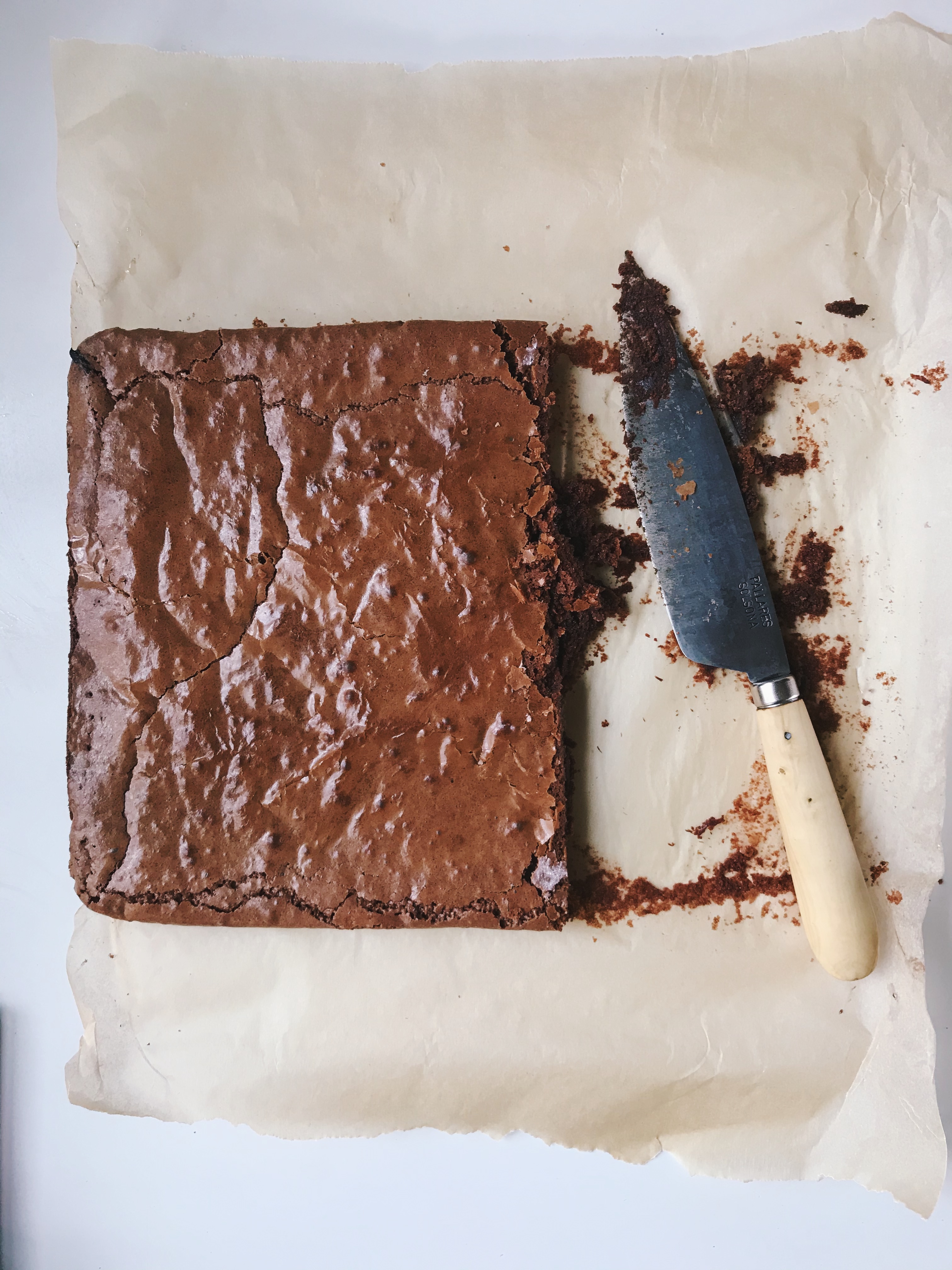
The sky was moody yesterday and my mood matched. I did that thing where you just sit quietly in the center of the action and respond to the queries that come to you, but you don’t seek them out. Don’t try to intervene in an argument, don’t redirect energy, don’t suggest other activities to try beside arguing about who sat on the white pillow first.
You’re just there, present, but gazing softly at your notebook.
Much to my dismay, time in the warp of social distancing seems to be speeding up. Weeks are the new state of being. I feel that without the book markers of the calendar–the festival, the birthday party, the spring parade–the months are’t being perceived. Are we entering an alter-planet, like that of the space voyager in interstellar (film, 2014), where a few moments spent too long evaluating a dust-storm on a distant planet means his missed his daughter’s high school years back on earth?
As part of their homeschool curriculum the girls memorize a timeline of historic events. Indus River Valley Civilization. China’s Shang Dynasty. Roman Republic. India’s Gupta Dynasty. Black Death. Seven Years War. Mexican revolution. President Nixon resigns. Apartheid abolished in South Africa. (I’m just sharing a few examples, there are 161 total markers on the timeline.)
I’ve relied on this timeline concept in recent weeks when we’ve had to announce camp weeks that will not happen, and the cancellation of festivals they were looking forward to attending. “This will be on the timeline, girls. You’ll tell your children about this year. And your grandchilden!”
It seems to help lend a bit of the perspective that is easier to come by as an adult. This is unique, and it’s not forever.
I was chatting with my sister the other day when I shared this incredibly clever cocktail with her that I had just invented: half a lime squeezed into a white ale beer. “It is very evocative,” I said. “Of what?,” she asked. “A corona with lime?”
Critics notwithstanding, I recommend to you simple riffs like this. Take a moment or two or ten to make something nice for yourself. I’ve also returned to the erstwhile negroni, that Italian cocktail that seems to taste best when the sun is setting. Evaluating the bar cupboard, I made the simple riff decision to replace the vermouth with chilled box white wine. I didn’t notice the difference actually, I felt it tasted better than the traditional vermouth version!
Whenever I’m feeling dread or intimidation over an activity a child has asked for help with, I remind myself: I can do anything for 30 minutes. Reading aloud book I don’t like. A sewing project I don’t understand myself, much more understand enough to explain it out loud. Standing sentry behind the toddler while she practices climbing the stairs. Surely I have thirty minutes for this child, right? Right.
I’m all for boundaries and saying no, but there are those projects that your child will insist on, with patience and eager hope in their eyes: please, please do this with me. I settle in, privately deciding if, at thirty minutes it’s as awful as I suspected it might be, I can be done. If we’ve done nothing but muddle the cutting and sewing project, it can be done. If the book is barely readable, if the experiment seems a meaningless mess, either way, we can be done. I can even have the presence of mind to say as the end approaches, “Just ten more minutes and then I’d like to do something else.”
The result is almost always that the child is satisfied with my time spent and very nearly on the verge of moving on themselves. I am satisfied that I’ve finally done the thing, and only thirty minutes has elapsed. It works very well. Try it, anything for thirty minutes, but keep it a secret from your fellow participants.
As for the way I like to sometimes spend thirty minutes, these brownies take about that to whip together, and they are exactly what I always hope brownies will taste like. They are steady staples in our stay-home dessert rotation.
Thick & Chewy Brownies from Canal House Cook Something
- 12 tablespoons butter
- 1 cup (120 grams) all-purpose flour
- 2 cups granulated sugar
- 4 oz semisweet chocolate, chopped
- 2 ounces unsweetened chocolate, chopped
- 1 teaspoon instant espresso powder (I do this, but I feel its optional too)
- 1/4 teaspoon salt
- 4 large eggs
- 2 teaspoons vanilla extract
- 1 cup chopped walnuts (very optional)
Preheat the oven to 350 degrees with a rack set in the middle of the oven. Grease a 9-inch square baking pan with some butter, then dust it with some flour, tapping out any excess.
Melt the butter in a medium saucepan over medium heat. Add the sugar, stirring until it has the consistency of soft slush and just begins to bubble around the edges, 1-2 minutes. Remove the pan from the heat. Add both chocolates, the espresso, and the salt to the pan, stirring until the chocolate melts and the mixture is well combined.
Put the eggs in a large mixing bowl and beat with an electric mixer fitted with the whisk attachment on medium speed. Gradually add the warm chocolate mixture, about 1/4 cup at a time, beating constantly until well combined. Stir in the vanilla. Add the flour and walnuts, if using, stirring until just combined. Pour the batter into the prepared pan.
Bake the brownies until a toothpick inserted into the center comes out clean, 45-60 minutes. Let the brownies cool in the pan on a rack, then into squares.
-
“Wear a mask. Wash your hands. Eat a lot of good food. Spend some fun evenings watching movies, reading with, and doing music with your kids.”
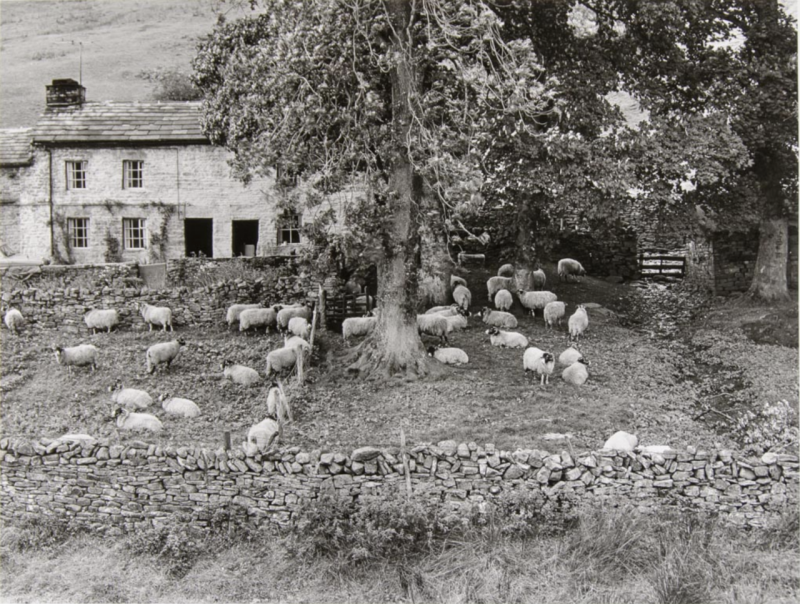
Two homeschool master theorists came together for an hour long zoom chat this week. Susan Wise Bauer, author of the four volume Story of the World (a series that tells history in the most fascinating read-aloud-friendly way) and The Well Trained Mind: a Guide to Classical Education at Home. And Julie Bogart, writing coach and author of The Brave Learner, an energetic and creative go-get-em homeschool book.
This is something that may have happened at a conference in the pre-COVID days, but instead I was able to watch on my couch with a heated blanket and a mug of sweet black tea. I put it on my calendar, announced it to the family, and lo: I listened in at 4pm in attentive silence.
Both women homeschooled their 4+ children. Susan classically, and Julie in a free-form unschooling “magic,” yet intensive way. Their books are full of ideas for curriculum, method, and approach. I can become overwhelmed reading their work, saying to myself “I might do one of these twenty ideas.”
As intense as that sounds, in Thursday’s talk, they were commiserative about life these days. It was an excellent call. I definitely recommend watching it, no matter which stage of homeschool-acceptance you are in right now. Julie compared grocery shopping now to doing an errand in a foreign country: you go to the Italian post office and come back home, ready for a nap. That rang so true for me. I’ve been anxiously hyped before each grocery visit.
Susan said seven-year-old boys who don’t like writing were about as common as autumn leaves in the fall.
Julie said to pick one or two subjects every day, and plan for no more than two hours of academic work of any sort each day total. Susan said she wishes she hadn’t been so dismissive of video games and comic books when her boys were little.
“Take a super short view and say: what do I want to do over the next two months? For each child, what is my number one priority, over the next two months? Put it in your calendar, make a physical note for two months from now. Decide then–do I still want to focus on this, or do I want to focus on something else?”[…] “Wear a mask. Wash your hands. Eat a lot of good food. Spend some fun evenings watching movies, reading with, and doing music with your kids.”
I hope you have a chance to enjoy it as much as I did. Link to the video of the call, posted on facebook.
dreamy sheep farm image via Thankful Sage Farm School.
-
the garden congress
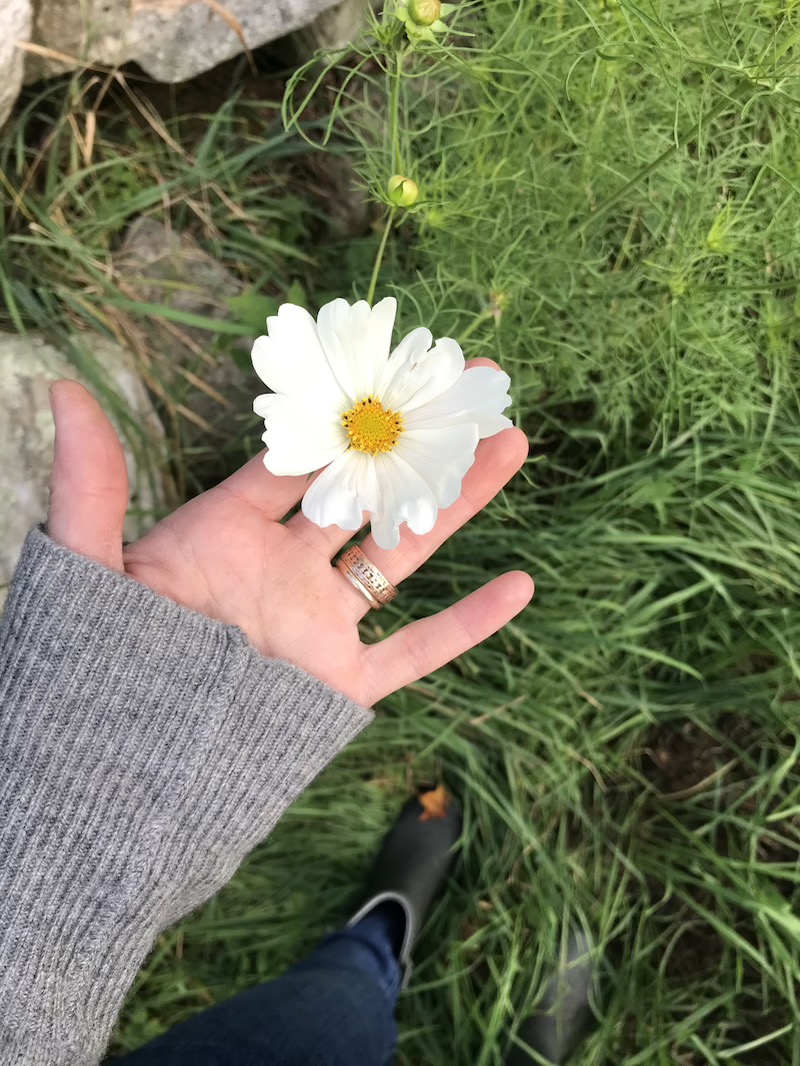
I’m carefully picking my way through spring tasks like thinking about the garden and typing up the girls’ portfolios for the year of homeschooling to send into Vermont state. The state office that oversees home studiers invites parents to begin submitting portfolios in March. Though most of my friends submit in the summer, last year I submitted ours in March and now I think it’s become a tradition for us. Something about acting like the year is already over helps me see how much we’ve done, and what I’d still like to do. And the change in perspective, the “this is all extra” reframes things as special and fun again.
Raising children has so much repetition, it’s so helpful to find these mirror-flip moments for yourself, catching the light and flinging it back on what you’re doing, in a new way.
Like when the four-year-old asks “to do potions” versus when the eight-year-old tells me she wants to do a science experiment. One sounds delightful and easy, the other sounds intimidating and fraught with possible errors. In reality, they are same experiment, the same work, the same amount of engagement.
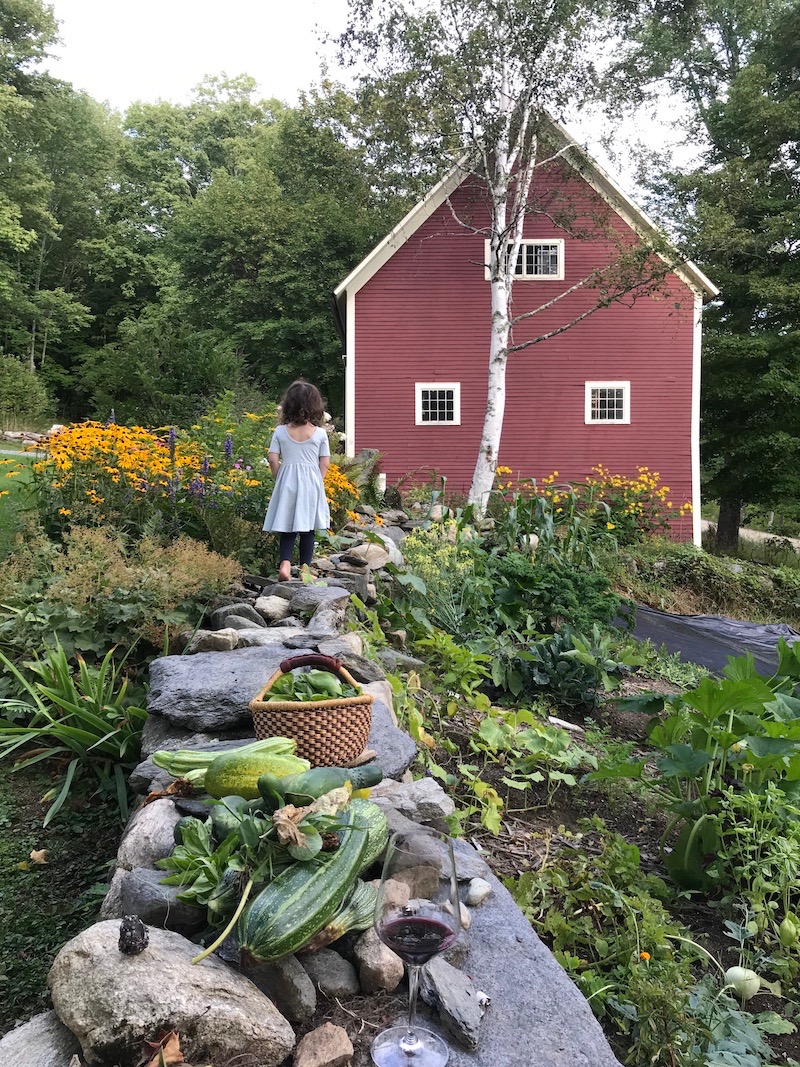
Back to that other spring task: thinking about the garden.
I could list all sorts of things we did wrong in last year’s garden. It was neglected, beloved, dehydrated, crowded, and much of it was planted in too much shade. But upon looking through the seed catalog one last time before ordering, I realized I could at least claim to be totally different than the person who went through the seed catalog, for the first time ever, last year. I read for different details, paying more attention to things like days to maturity and transplanting than I did before. So even though I don’t think I’ve learned all that much, I can tell I’ve learned a little bit. And that’s how it goes.
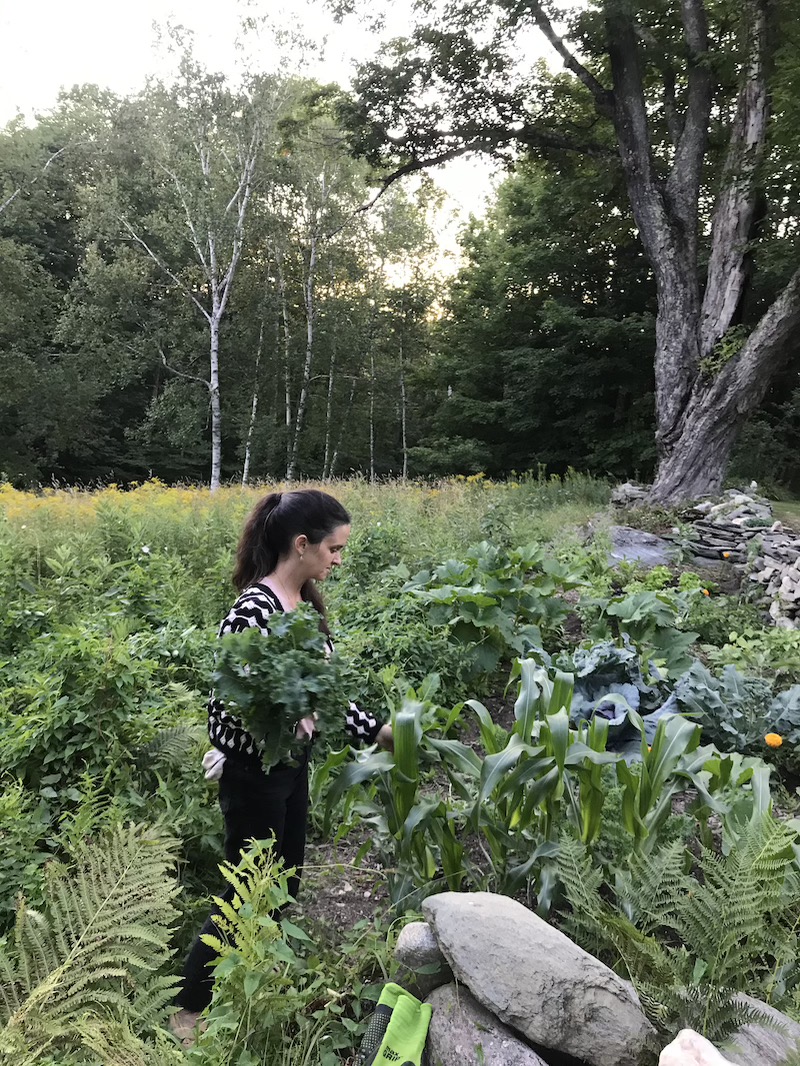
Whenever I talked with the neighbors about the garden, I naturally listed all the things that weren’t going quite right. But then I always added, “I just love it though.” I noticed that all the time I spent in the garden, I enjoyed. It was a deeply relaxing place for me to putter around. it was a place that was quiet, patient, and tranquil, three attributes to which I constantly aspire.
In our part of Vermont, gardeners wait until the end of May for a last frost. People plan to plant on Memorial Day weekend. So I still have some time to get things going around here. Last year I learned that all of the major seedling sales are in May, so I’ll be prepared this year to buy things that I don’t want to start from seed, like broccoli, tomatoes, eggplant, and pumpkins. Another thing I learned: those sales happen once, and then they are done! If you see them, it’s very nice to buy a few strawberry seedlings and put them in a container on your porch.
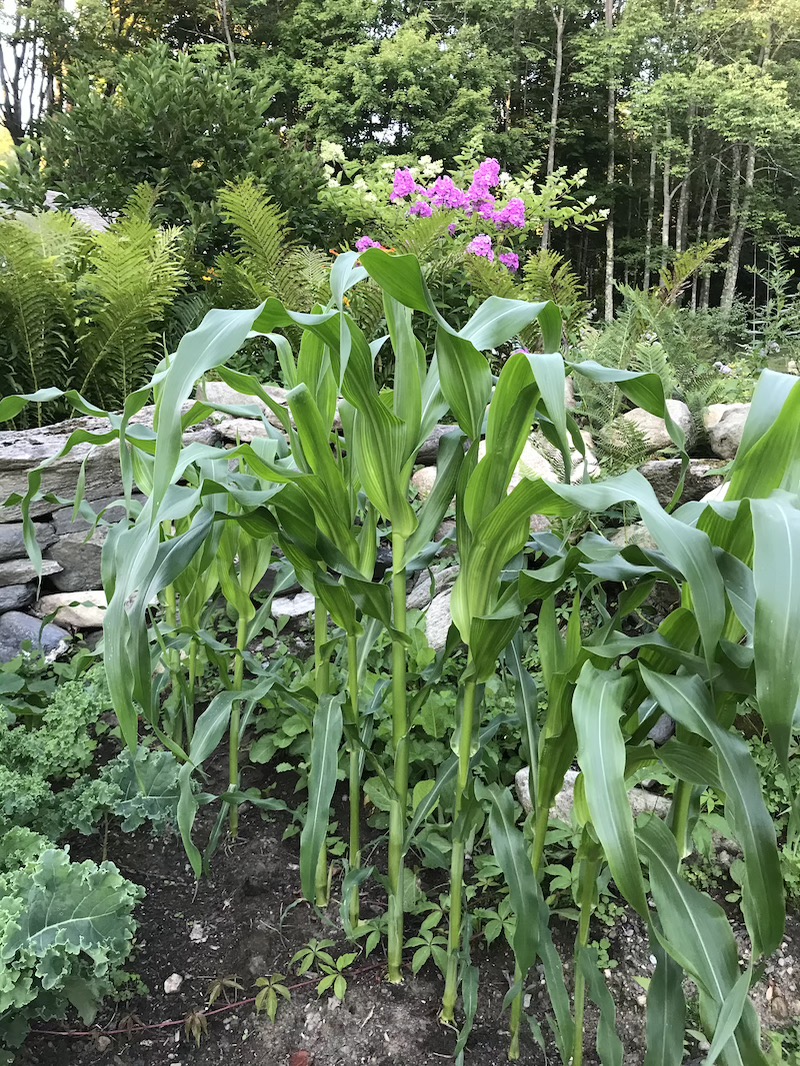
young corn 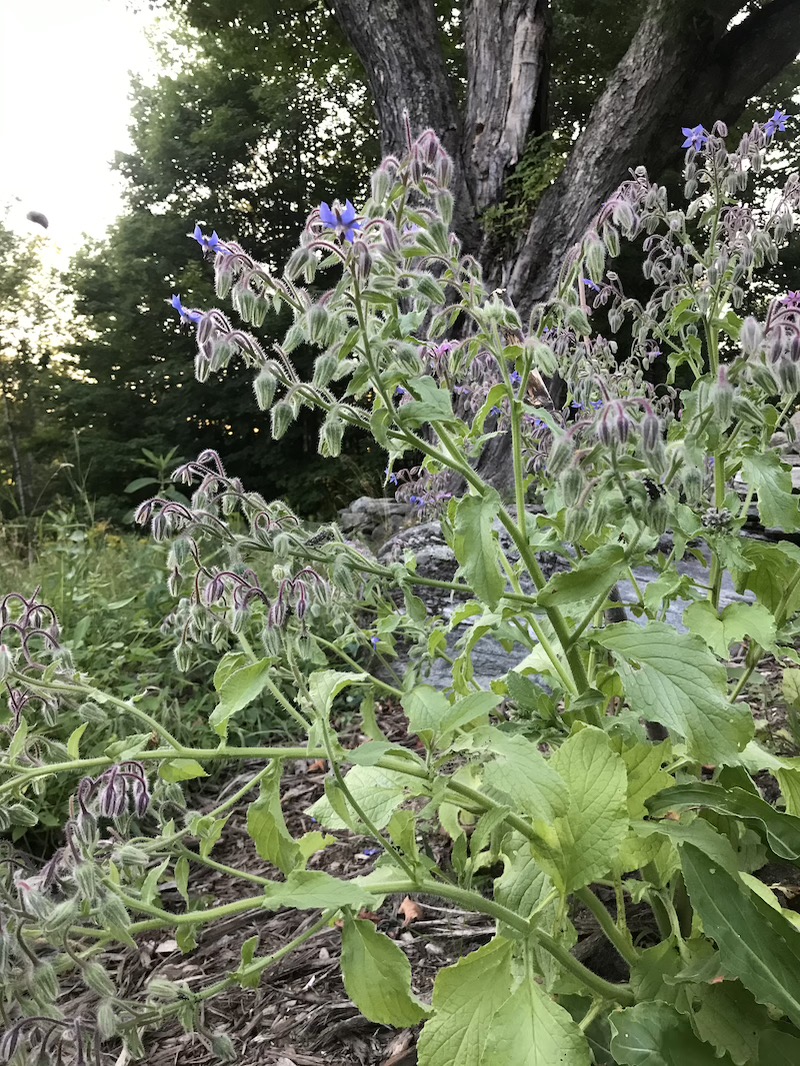
borage, post bloom 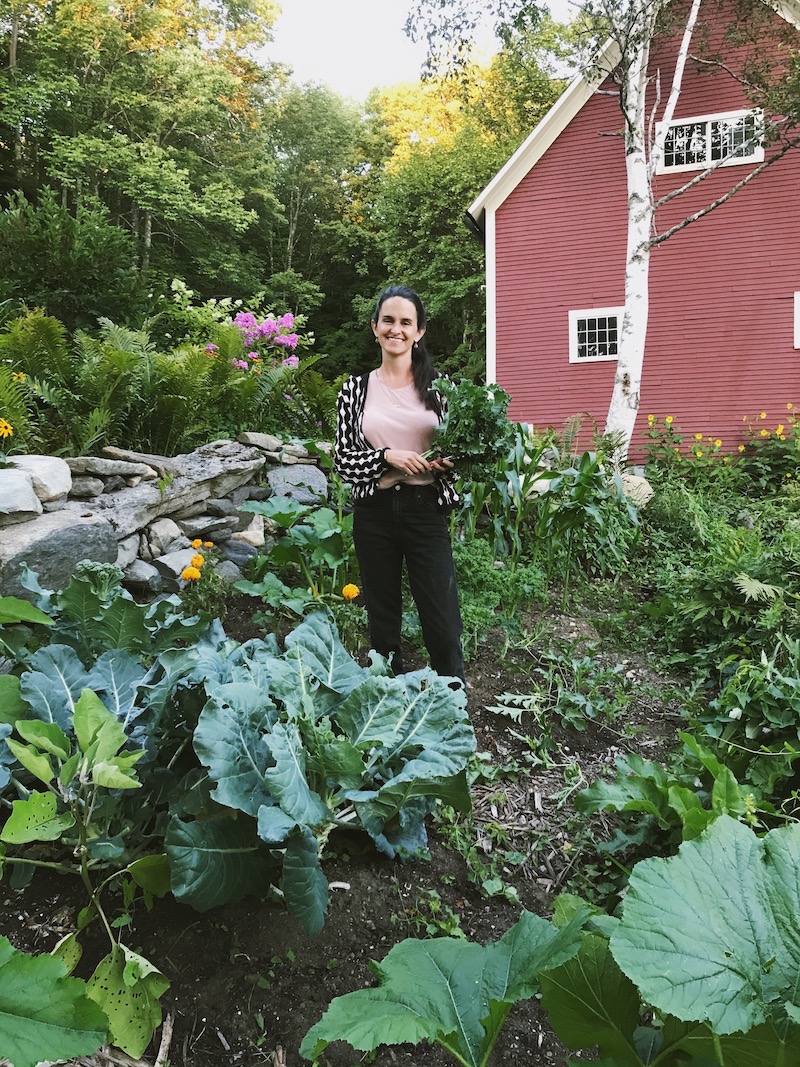
The other day my friend Bridget asked me what I will plant again, so here’s the list of what I’m thinking through. I link to Johnny’s because that’s who we primarily ordered from:
- Zucchini: I’m linking to the type that we planted, I loved it. It had lovely coloring and the blossoms were gorgeous. Several times I fried the blossoms up (never bothered with stuffing them) as a pre-dinner snack.
- Basil: I loved having several rows of basil. Such abundance! I could use as much as I wanted, and make as much freezer pesto as I wanted. I pinched off the flowers whenever I saw them beginning to appear and was able to eat off that first planting all summer.
- Beets: Our beets did not get big enough in time for the season. I cook with beets infrequently, and anyway I do like getting them from the farmer’s market, where they seem to spill over with abundance.
- Borage: an easy plant that shot right up and was soon covered with dozens of soft purple and blue edible flowers. The bees adored it and the kids did too. We’ll do this again.
- Kohlrabi: This is a forgiving cheerful little plant that we like to eat raw. I planted too much of it, and will likely just do a small row of it this year.
- Beans & peas: These were planted in an area with too much shade. I will try them in a new area this year.
- Tomatoes: I had terrible luck but I will try again, of course. Likely with the Sungold cherry tomatoes, which are so delicious
- Carrots: I spent quite a bit of time replanting carrot seeds after rain downpours, so this time I will buy pelleted seeds that (should be) easier to keep track of.
- Corn: The five stalks of corn that we grew did not provide us with more than a meal or two’s worth of corn, but it was so fun to watch it grow. The plants are fascinating, tall lean Abraham Lincolns standing stately in the garden congress. We’ll try a few more varieties this year, just for fun.
- Lettuce: I only planted one type and it thrived. I was totally bored of it within a week or two. I’m leaning into greens this year. They are so interesting and relatively easy to grow, mine seemed to do well because they got shade from the afternoon sun.
- Kale: Same as above, but I never tired of our kale, beginning in July on through September. It was so delicious.
- Herb bin: all the herbs, besides the basil, were in a container near the kitchen door, which was lovely. I encouraged the girls to eat whatever they wanted from the container. This year I will plant basil and dill in the garden, but keep parsley, oregano, mint, and chives in the handy container.
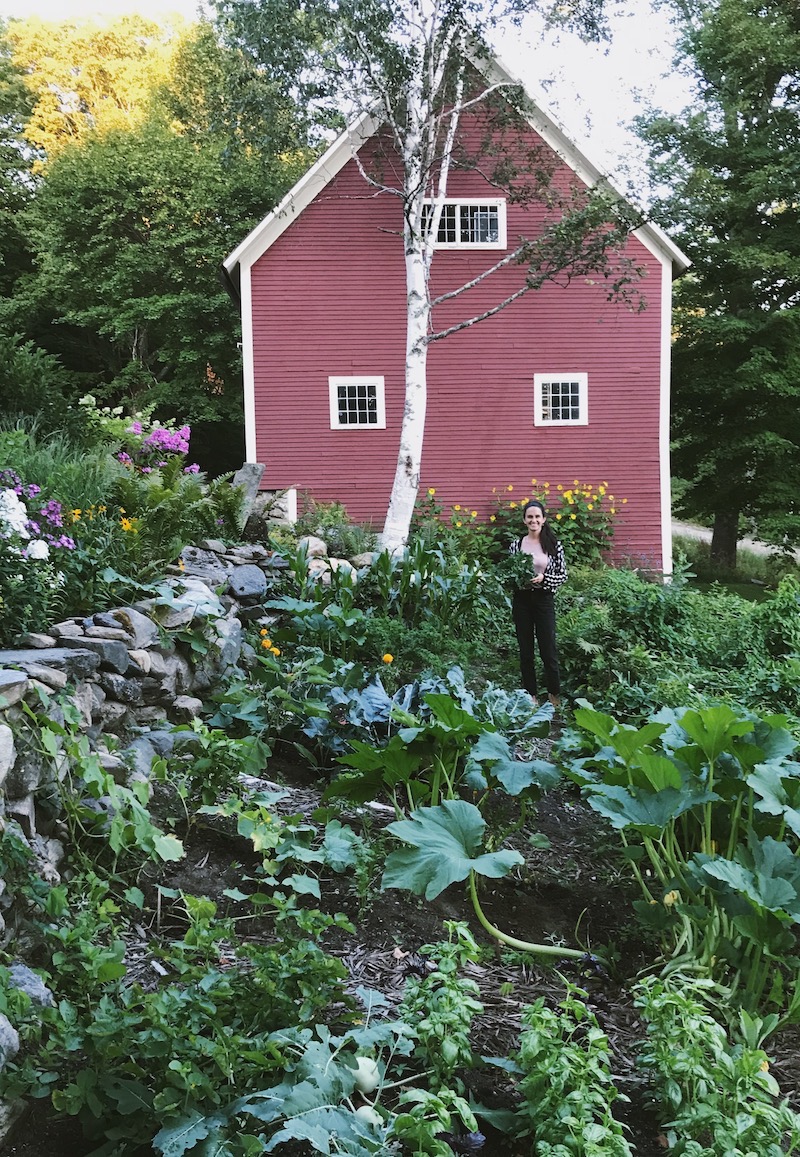
an August evening. -
Consider the Bedtime
Because of the crazy times, people are suddenly home with their young children for extended and unexpected periods of time. I’m writing up a few general ideas I’ve learned over the years of being at home with one, two, three, and now four children.
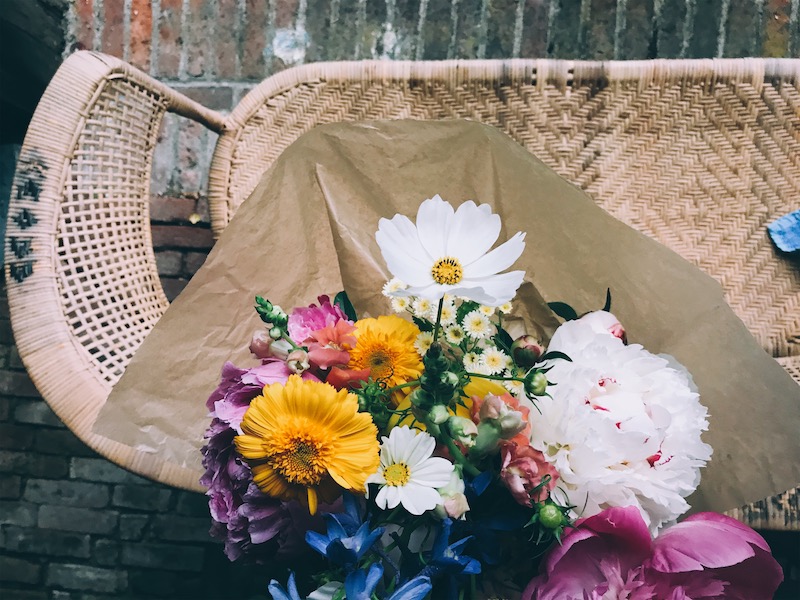
General idea number three…
Consider the bedtime.
Is it working for you? What is it that your family needs out of bedtime if your schedules have changed? What do your energy levels look like in the evening right now?
When sharing a house all day with children, bedtime is a method to close up the day so that you still have a few hours of thoughtful mental space before you fall asleep.
A bedtime after a day apart and full of activities is one thing. The bedtime after a day together is a garden feature of a different sort. It is a hedge between two yards. On one side of the hedge, adults relax on the couch with books, silence, glasses of wine. On the other side of the hedge, bedside lights are lit, piles of books threaten to fall off the bed, there’s talking, there’s gazing off into space.
Some things to consider:
- Is bedtime early enough? Not likely–on average American children do not get enough sleep. Nine hours at a minimum for ages six and above. We plan on twelve hours in the bedroom, more on that below.
- Is the process itself beginning early enough? If bedtime has always been your cozy time together to unwind, consider beginning it earlier than usual so that you can take it at a leisurely pace–the teeth brushing, finding the pillow, resetting the blanket. The goal is to have two hours to yourself afterward before you need to sleep.
- Wakeful bedtime allows children to practice time apart. You may be surprised to see how much a child wishes to accomplish when suddenly freed of the mundanity of adult availability.
- If they stay up, let them sleep in. This is one of the greatest perks of not having to get the children out the door by any specific time in the morning! I like to project a 12hr cycle. (Here’s a sleep chart by age by Dr. Sears, though 9 hours does seem like the absolute minimum for a six/seven year old.) If they stay up until 9pm, wake them around 9am. If they stay up until 10pm, it’s up to you, but I like to wake them up at 9am anyway. If they wake up at 8am but you wish they’d slept in, be sure to let them stay up until at least 8pm.
Here’s what we do, having been on a homeschool schedule for over a year. I do not expect it to be guidance for you in any way, this is just what works for us right now. 7pm: Baby in bed. 7:45pm: Begin bedtime for the older three. 8pm: Girls in bed. Parents out of the room. 10pm: Lights out, but nightlights are allowed for those still reading.
In the morning, the baby and I will wake between 7-8am, and have some peace to ourselves. I often write for a twenty minutes or so during this time. The four-year-old will wake around 8:30, and the older two will likely have to be waken at 9am. They would sleep until 10am but that doesn’t make for a great morning cycle for us.
xo